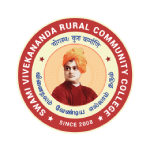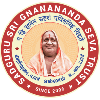Fundamentals of Computers
Course Objectives
While studying the Fundamentals of Computers, the student shall be able to:
- Explains the features of Windows
- Elaborates the various accessories used by Windows
- Describes the evolution of Computers and its advancements
- Elaborates major components of a Computer
Course Outcomes
After completion of the Course Fundamentals of Computers, the student will be able to:
- Work on Windows files and folders
- Elaborate the history and evolution of Computers
- Identify and enumerate about the major components of the Computer
- List the input and output devices of the computer
- Explain the features of Linux
Block-1: Windows and its Accessories
Unit-1: Windows
Introduction to Windows-Features of Windows- Various versions of windows- Working with Windows- My Computer & Recycle bin-Desktop icons-Working Styles of windows- Working with Files & Folders- Shortcuts.
Unit-2: Windows Accessories
Windows Accessories- Setting common Devices using Control Panel -Start Button & Program Lists- Installing and Uninstalling of Hardware and Software.
Block- 2: Computer and its Components
Unit-3: Computer and its Applications
Introduction- Evolution of Computers- Applications of Computers- Advantages and Disadvantages of Computers- Computer System
Unit-4: Computer and its Components
Components of a Computer System-Storage Unit-Primary storage-Secondary storage devices-Input Devices-Output Devices-Ports
Block- 3: Operating a Computer and its OS
Unit-5: Operating Computer with GUI
User Interface- Use of common icons- Folders and Directories-Creating/ Renaming/ Deleting a file or folder-Common Utilities.
Unit-6: Operating System
Introduction to Operating System-Functions of Operating System-Types of operating systems (GUI Based)-Real Time and Distributed-Commonly used operating systems.
Block- 4: Linux
Unit-7: Introduction to LINUX
Introduction to Linux- History of Linux-Difference between Linux and Windows- Difference between Linux and Unix.
Unit-8: LINUX OS
What is GNU?- Interesting facts about Linux-Why Linux is virus proof?-Various Linux Distributions-Basic Commands-Accessing remote servers and Files.
DTP Design
Course Objectives
While studying DTP Design, the student shall be able to:
- Understand the features of Coral Draw and creating Layout
- Design and work with Coral Draw
- Explain the procedure of editing of text using Adobe Indesign
- Describe the Typography design of text
Course Outcomes
After completion of the Course DTP Design, the student will be able to:
- Perform the shaping of objects, editing of text using Corel Draw
- Demonstrate the skill of editing and formatting the text using Adobe Indesign
- Perform paragraph alignment text effects by Typography
- Import image and tables from external data
Block- 1:Coral Draw
Unit-1: Introduction and Tools
About CorelDraw-The User Interface-Creating a New Document-Opening a Existing Document-Working With templates-Layout-Import and Export-Tools
Unit-2: Layout and Working Process
CorelDraw layout-Working with Curves- Shape Tool- Working with shape and Object- Working with Text and Line Formatting Text- Formatting Paragraph- Changing Shape of the Object- Working with lines
Block- 2:Adobe Indesign
Unit-3: Documents and Frames
Starting new Documents and Page size-Master pages Footers- Place Holder Master- Applying Master and Overriding Master- Editing Master Pages- Modifying and Resizing Text Frames- Modifying and Resizing Graphic Frames- Wrapping Graphics- Creating and Duplicating Frames- Rotating and Aligning Objects
Unit-4: Importing and Editing Text
Managing Fonts- Creating and Entering Text- Creating Headline- Flowing Text- Working with Styles- Aligning text- Threading Text- Changing number of columns- Changing text Alignment- Character Style- Find and Replace and Spell Check- Text on a path
Block- 3: Typography
Unit-5: Basics of Typography
Vertical Spacing- Baseline Grid- Space above and below Paragraph- Font and Type Style- Paragraph Alignment- Special font features and Drop Cap
Unit-6: Text Effects and Colours
Fill and Stroke for Text-Kerning and Tracking-Working with Tabs-Rules for Paragraph- Working with Colour
Block- 4: Importing and Linking
Unit-7: Importing and Linking Graphics
Adding Graphics-Vector and Bitmap Graphics-Managing links to imported Graphics- Updating Graphics-Clipping Paths-Settings for Display Performance-Library to manage objects
Unit-8: Importing and Formatting Tables
Importing and formatting Table-Formatting borders and alternating row colours- Graphics within tables-Formatting text in table-Character style to table text-Adjust column size
DTP Package
Course Objectives
While studying DTP Package, the student shall be able to:
- Describe the features of MS Word and work with formatting
- Explain and create PowerPoint slides by inserting animations and graphics
- Work on MS Excel and perform different functions and manipulations
- Elaborate the different layout and styles used in Page Maker
Course Outcomes
After completion of the Course DTP Package, the student will be able to:
- Edit and format the documents using MS Word
- Demonstrate skill of slide creation using MS PowerPoint
- Create records and files in MS Excel and manipulate the same and create graphs for the records
- Perform layout of text and format the same using Page Maker
Block 1: MS Word
Unit-1: Introduction to MS Word
Introduction to Word- Getting to know Word -2010- Editing text documents- Formatting documents- Saving Files- Formatting page & Setting Margins- Special Symbols
Unit-2: Paragraph Formatting
Paragraph Formatting-Alignments and Formatting- Creating Table- Insert and Format Shapes- Spell Checking- Printing Document
Block- 2: MS PowerPoint
Unit-3: Introduction to PowerPoint
Introduction to Power Point-Creating and opening presentations-Slides and Layouts- Formatting a presentation
Unit-4: Animation and Effects using PowerPoint
Arranging Objects-Adding graphics to the presentation-Setting Animation Effect- Adding effects to the presentation-Transition effect
Block- 3: MS Excel
Unit-5: Introduction to MS Excel
Spread Sheet and its Application-Menus – Main Menu- Opening Spreadsheet- Working with Spreadsheets- Spread Sheet Addressing
Unit-6: Functions in MS Excel
Entering and Deleting Data- Inserting Functions-Formatting-Setting Formula- Mathematical Operations-Hiding/Locking Cells-Shortcut Keys
Block- 4: Page Maker
Unit-7: Introduction to Page Maker
Overview of PageMaker-PageMaker Tools- Page Maker Tips and Tricks
Unit-8: Layout and Styles of Page Maker
Text Layout and Style- Object Styles- Edit Menu- Edit Story- Features of Edit Story

